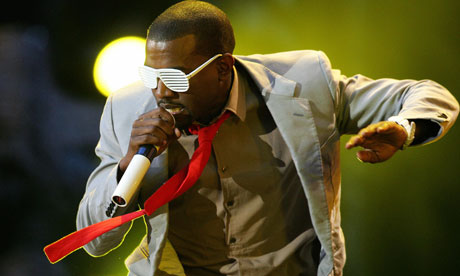
For years the drinks most associated with hip-hop were distinctly aspirational. Busta Rhymes rapped about Courvoisier, Jay-Z about Louis Roederer Cristal and later, after falling out with the boss of Roederer, Armand de Brignac Ace of Spades champagne, while Nas rhymed about upmarket vodka Grey Goose. These were expensive symbols of the high life.
In the past couple of years, a more down to earth drink has cropped up in songs by Kanye West, Drake and Lil' Kim. Moscato, a slightly sweet, fizzy, low alcohol and inexpensive white wine with origins in Piedmont, Italy, has become the hip-hop community's new favourite drink. According to a report on decanter.com, sales have risen by 70% in the US in a year. And supermarket buyers are anticipating something similar here.
It's not hard to see the appeal of moscato to rappers or indeed anyone else. At its best, moscato is pure, aromatic and unforced, sweet without being icky, and light (generally around 5.5%), all qualities that also make it perfect for a summer's afternoon. Nor is it hard to see why supermarkets might be excited. The low alcohol means these wines appeal to punters concerned about their weekly booze intake, and they also qualify for a lower duty band, which means more profit. Unlike the flurry of de-alcoholised wines that have arrived in UK supermarkets recently, the low alcohol is natural, so they taste good rather than artificial.
The best moscatos tend to be the Italian originals, sold under the protected name of Moscato d'Asti. My favourites include Elio Perrone Moscato d'Asti (£6.75, The Wine Society), Suri Sandrinet, Cerutti, Cassinasco Moscato d'Asti (£11.95, Berry Bros & Rudd) and Dezzani Morelli Moscato d'Asti (£10.99, Oxford Wine Company). A big brand offering, Brown Brothers Moscato (£6.49, Tesco), is creditably breezy and drinkable.
Not that moscato has the monopoly on attractive lower-alcohol wines. If you're happy with a bit of sweetness, then delicate, off-dry German rieslings with their distinctive acidity are among the world's greatest white wines: Max-Ferd Richter's sweet-sour and mineral Brauneberger Juffer Riesling Kabinett 2009 from the Mosel Valley (£13.20, Tanners, limited stocks) clocks in at 8%.
When it comes to drier styles, it's harder to find naturally low alcohol for the simple reason that in dry wines the sugar in the grapes is fermented into alcohol. But it's not impossible: grassy, bone-dry semillon from the Hunter Valley in New South Wales, Australia and the spritzy fresh vinho verde from northern Portugal both regularly have alcohol between 10 and 11% ABV, while many of the aromatic whites of the Loire Valley are less than 12%. It's also possible to find decent reds under 12%, although they're always going to be pretty and refreshing rather than chunky and powerful: the reds of the more northerly French regions, such as the Loire and Burgundy/Beaujolais, are frequently around the 12% mark. And for sparkling, few proseccos top 11.5%.
Could any of these styles replace moscato in Kanye's affections? Stranger things have happened. After all, a couple of years ago no one would have predicted that Atlanta-based rapper Waka Flocka Flame would declare: "I'm gonna sip my moscato and you gonna lose them pants."
Six great light whites
Robert Sérol Vieilles Vignes, Côte Roannaise, France 2011 (£7.95, The Wine Society, 12% abv)
From the southern Loire not far from Lyon, and made from the gamay grape, this red is a beaujolais in all but name, and a very good one at that. With its fresh and vibrant summer berry flavours, it's succulent, light and very much alive.
Marks & Spencer Vermentino, South Australia 2011 (£9.99, Marks & Spencer 11.5% abv)
The Italian grape vermentino is one of the few white varieties to stay crisp and fresh even in warmer climes such as southern France, so it's no surprise it's starting to catch on in Australia, too. This example from the excellent Yalumba is cool, clear and full of herbal and citrus tanginess.
Three Choirs Annum, Gloucestershire, England 2011 (£7.19, reduced from £8.99 until 8 May, Waitrose; 11.5% ABV)
The English don't have the climate to produce high-alcohol wines, but there's no sense that virtue is being made out of necessity in this mélange of five grape varieties. Crisp green apples, greengages and star-bright acidity – a patriotic alternative to sauvignon blanc.
Torres Viña Esmeralda, Catalunya, Spain 2011 (From £7.49, Majestic, Waitrose, Booths; 11.5%)
This long-standing Spanish classic from the ever-reliable Torres family is as good as ever, blending muscat with gewürztraminer for a spicily aromatic and subtly off-dry mix of floral notes and freshly pressed grape juice that could have been designed for Thai food.
Dr Loosen Graacher Himmelreich Riesling Kabinett, Mosel-Saar-Ruwer, Germany 2010 (£12.99, Sainsbury's; 8.5% abv)
Ernst Loosen is a revered figure in Germany, producing fine riesling in both the Pfalz and, as here, in his home vineyards in the Mosel. This is a very complex blend of white flowers, tangy apple and delicate, but penetrating acidity.
Michele Chiarlo Nivole Moscato d'Asti, Piedmont, Italy 2011 (£9.20, 37.5cl, slurp.co.uk; 5% ABV)
This is Moscato d'Asti at its most charming and graceful. Soft and impossibly fresh, with the pure slightly sweet muscat grape juice positively skipping across the tongue on a gentle wave of acidity and fine bubbles.

